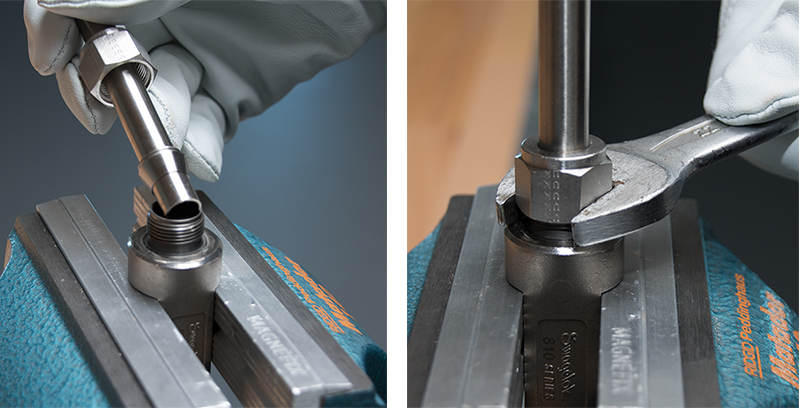Do you find it a challenge to navigate around the various types of fittings and tubes?
And did you know that a combination of different materials can be crucial for your installation?
The solution you select can have a major impact on operation, maintenance and safety.
It is therefore important to select the correct fittings and pipes the first time. As a supplier and expert in the selection and combination of various fittings and pipes, we both advise and train our customers in the correct choice of fittings. We know the risks when combining different types of fittings and pipes, so we want to minimize our customers’ operating costs and ensure that all customers avoid hidden pitfalls.
By spending a day on one of our courses on double ferrule fittings, you will be able to recognize, select and assemble fittings and tubes.

Duration
The course lasts for one day.
Examination and documentation
The course day ends with an examination and is documented with a certificate.
Who can benefit from participating?
Anyone who works with fittings and pipes on a daily basis and/or designs tasks with fittings and pipes.
Date and price
The course is held continuously throughout the year. Contact salesfluid@hytor.com for further information, date and price. Follow us on LinkedIn, where we will announce the dates of our next courses.
Are you and your business interested in having us come to you and your colleagues to provide an update on instrument fittings? If so, our “Lunch & Learn” concept is worth a closer look.
The course will provide you with answers to the following questions:
- When can you safely choose a double ferrule fitting?
- What materials provide the optimal solution in your installation?
- When is it dangerous to combine different materials and what are the risks of such a combination?
- What materials are relevant for use in a given installation?
- What is the optimal material thickness for a given installation?
- How do you use temperature tables correctly?
- How do you read and understand the manual correctly?
- How do you assemble the double clamping ring fittings correctly? We often see an overtightening or undertightening of double ferrule fittings, and this is crucial for leaks and stoppages.
- How do you use a hand bender and gain an understanding of bend radius and marking?
- When can you safely choose a double ferrule fitting for a high pressure fitting?